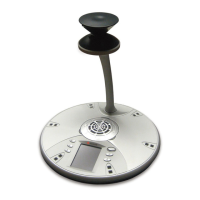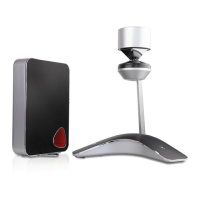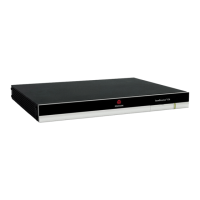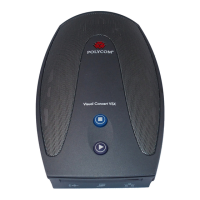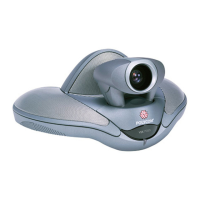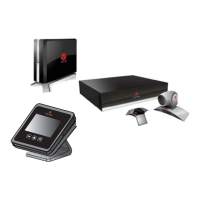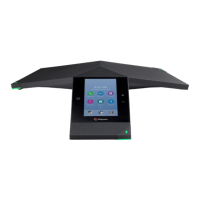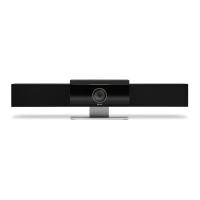Polycom CX5500 Unified Conference Station Administrator’s Guide 1.1.0
Polycom, Inc. 114
Configure Real-Time Transport Protocol Ports
You can configure the phone to filter incoming RTP packets. You can filter the packets by IP address, or
by port. For greater security, you can also configure RTP settings to reject packets arriving from a non-
negotiated IP address or from an unauthorized source. You can reject packets that the phone receives
from a non-negotiated IP address or a non-negotiated port.
You can configure the phone to enforce symmetric port operation for RTP packets. When the source port
is not set to the negotiated remote sink port, arriving packets can be rejected.
You can also fix the phone’s destination transport port to a specified value regardless of the negotiated
port. This can be useful for communicating through firewalls. When you use a fixed transport port, all RTP
traffic is sent to and arrives on that specified port. Incoming packets are sorted by the source IP address
and port, which allows multiple RTP streams to be multiplexed.
You can specify the phone’s RTP port range. Since the phone supports conferencing and multiple RTP
streams, the phone can use several ports concurrently. Consistent with RFC 1889, the next-highest odd-
numbered port is used to send and receive RTP. The table Configure Real-Time Transport Protocol
provides a link to the reference section.
The phone is compatible with RFC 1889 - RTP: A Transport Protocol for Real-Time Applications - and the
updated RFCs 3550 and 3551. Consistent with RFC 1889, the phone treats all RTP streams as bi-
directional from a control perspective and expects that both RTP endpoints will negotiate the respective
destination IP addresses and ports. This allows real-time transport control protocol (RTCP) to operate
correctly even with RTP media flowing in only a single direction, or not at all.
Configure Real-Time Transport Protocol Ports
Central Provisioning Server
Filter RTP packets by port
site.cfg > tcpIpApp.port.rtp.filterByPort
Force-send packets on a specified port
site.cfg > tcpIpApp.port.rtp.forceSend
Set the starting port for RTP packet port range
site.cfg > tcpIpApp.port.rtp.mediaPortRangeStart
Web Configuration Utility
Filter RTP packets by IP address, by port, force-send packets on a specified port, and set the port range start by
navigating to Settings > Network > RTP.
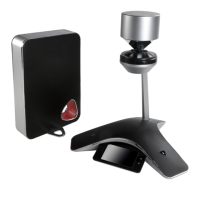
